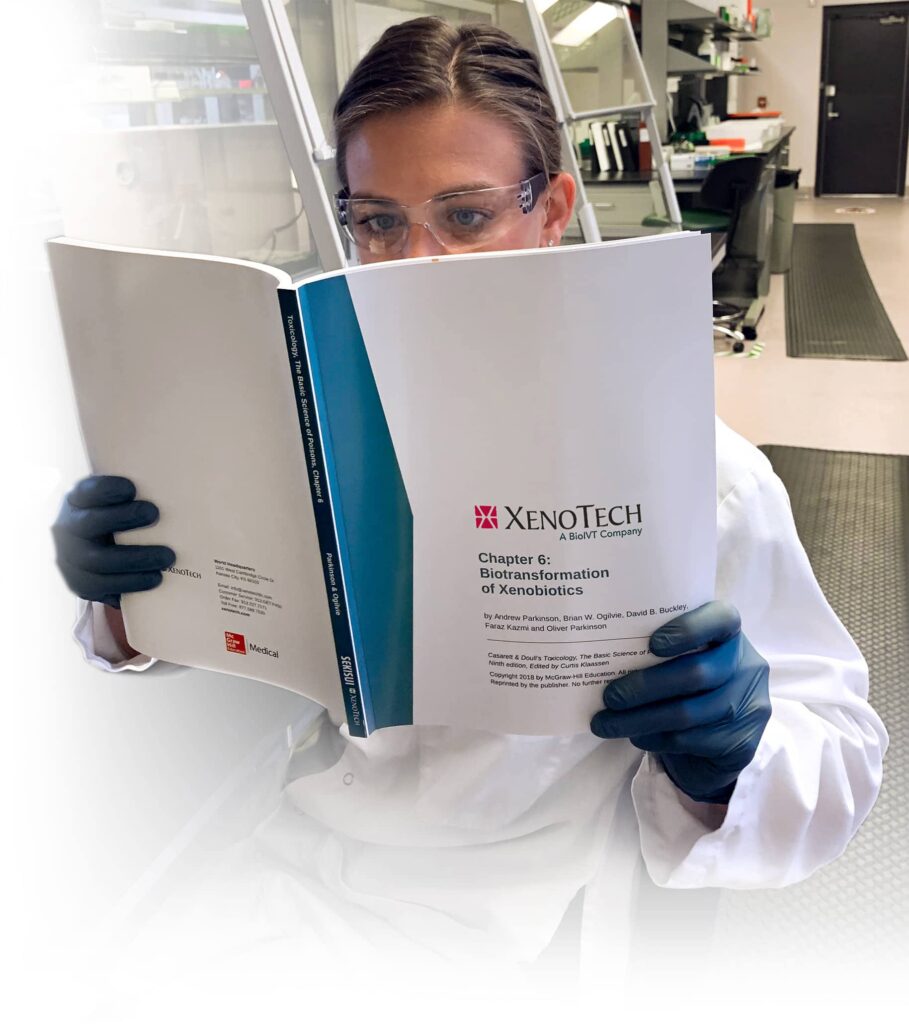
High content automated metabolic stability and CYP inhibition cocktail screening assays for early drug development
Full Title
High content automated metabolic stability and CYP inhibition cocktail screening assays for early drug development
Abstract
The assessment of metabolic stability and cytochrome P450 (CYP) inhibition are becoming important parameters to determine earlier in the drug development process and are now increasingly assessed during early drug discovery. The evaluation of metabolic stability is important because the parameters of half-life (t1/2) and the elimination rate constant (kel) can be used to determine in vitro intrinsic clearance (CLint) which can then be scaled to estimate in vivo intrinsic clearance (CLint,H). This information is important since the goal of the pharmaceutical industry is to develop drugs that require minimal dosing and maximum therapeutic exposure. Conversely, the assessment of CYP inhibition is important because CYP enzymes are typically the primary pathways of biotransformation for the majority of drugs. As many drugs are co‑administered simultaneously, the inhibition of any given CYP isoform by a perpetrator drug may result in the impaired clearance of a victim drug, leading to elevated exposures that may be toxic (i.e. drug-drug interactions; DDIs).
In the present study we developed high content screens using automated methods on a Tecan liquid handler to provide metabolic stability endpoints (i.e. t1/2, kel, CLint) and CYP inhibition endpoints (i.e. IC50 values). Briefly the method for metabolic stability determination was developed to screen at a single concentration up to 16 compounds incubated at 37°C with human liver hepatocytes, microsomes, or other subcellular fractions from up to six different species at four time points. Compounds such as alprazolam & warfarin (low CLint), diltiazem & propranolol (intermediate CLint), verapamil & midazolam (high CLint) among others were used to qualify the assay. The compounds were analyzed by LC/MS/MS and the data were processed by a LIMS. For the assessment of CYP inhibition, the method was developed to screen up to 12 compounds at seven concentrations (with a solvent control) incubated with human liver microsomes (0.1 mg/mL) at 37°C, with and without a 30 min preincubation (for the assessment of metabolism-dependent inhibition; MDI) followed by a 5 min seven-substrate cocktail incubation (with probe substrates specific for seven CYP isoforms, namely phenacetin – CYP1A2; bupropion – 2B6; paclitaxel – 2C8; diclofenac ‑ 2C9; S-mephenytoin – 2C19; dextromethorphan – 2D6 and midazolam ‑ 3A4/5). Specific CYP inhibitors as well as the pan-CYP inhibitor 1‑aminobenzotriazole (1-ABT) were used to generate IC50 values and qualify the assay. Samples were analyzed by LC/MS/MS and the data were processed using a LIMS.
Overall the results from both screens demonstrated the robustness of these assays for use in early drug discovery screening, allowing for earlier drug liability detection and lead optimization.
This poster was presented at the annual Society for Laboratory Automation and Screening (SLAS) meeting in 2014.